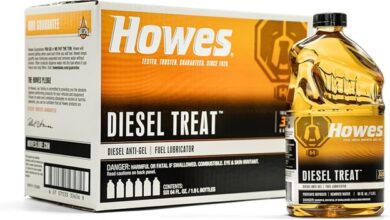Beyond the Visible: Internal Damage to Your Car’s Wheel Studs

Wheel studs appear strong and solid. They hold the wheels firmly in place. Yet hidden issues can weaken them over time. The damage often starts inside the threads. Small cracks may form deep within the metal. These cracks can grow under pressure. When driving, stress and heat affect the strength. Internal corrosion can also set in quietly. It slowly eats away at the stud core. Visual checks may not reveal this. The outer surface can still look fine. Only a proper inspection can expose the truth. Ignoring the warning signs can be risky. There comes the Auto Repair in Johnstown, OH based services like the Stringer Auto Repair with great repair solutions.
The Role of Heat and Stress
Every journey places stress on the studs. Heat builds up under braking motion and friction. Repeated cycles can lead to fatigue. The internal structure may change slowly. The metal loses its strength with time. The surface may stretch or twist slightly. These movements can start small fractures. Once formed, they spread inward fast. Overheating can also dry the protective layer. Without enough defense, damage increases rapidly. The tightening and loosening of nuts add strain. Each force works deep inside each stud. The result is unseen weakness and reduced reliability.
Corrosion and Metal Fatigue
Moisture can slip past the nut seat. Tiny gaps may allow water entry. Rust forms inside and weakens the threads. Salt on winter roads speeds corrosion. The metal surface begins to pit internally. With each turn of the wheel, stress grows. The structure continues to weaken slowly. The wear is not visible at first glance. The stud may look perfect outside. Still, hidden rust is eating the core. Metal fatigue follows corrosion easily. The stud can snap when least expected. Regular checks from Stringer Auto Repair can help prevent such failure.
Improper Installation and Torque Issues
Incorrect tightening leads to many failures. Excessive force can stretch the stud body. Too little torque leaves the wheel loose. Either mistake causes internal distortion. The metal bends beyond safe limits. Threads can twist and lose shape. Hidden cracks can form inside the stud. These cracks often go unnoticed for months. They grow with every wheel rotation. The fit becomes less secure each time. A mechanic uses special equipment to test tightness. This ensures even pressure on all studs. Proper fitting helps extend their life. Care during installation is always vital.
Professional Inspection and Maintenance
Visual checks at home are not enough. The inner areas require expert tools. Professionals use advanced torque and imaging devices. These help locate hidden defects deep inside. A qualified technician can test hardness and alignment. Early detection prevents dangerous wheel failure. Regular service helps maintain stud health.




